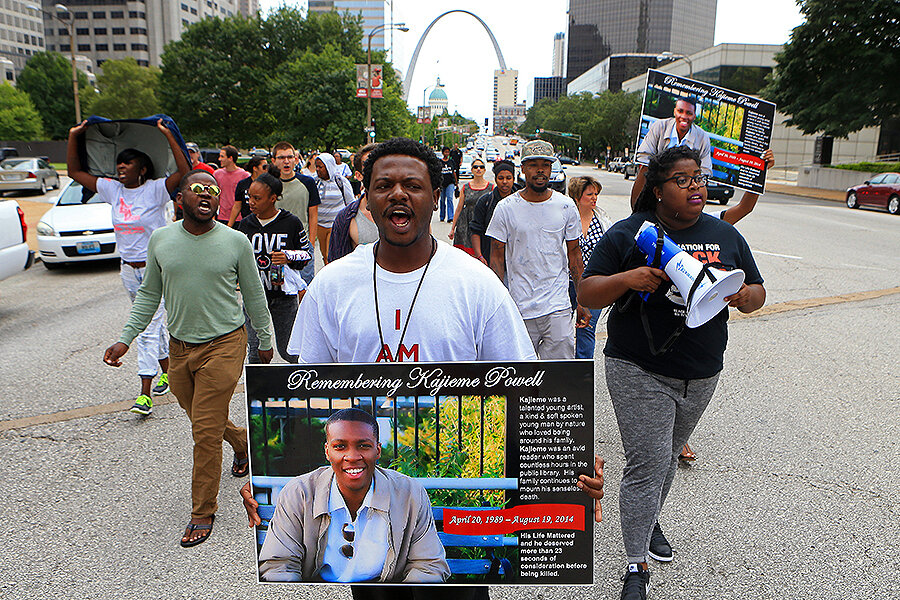Police harassment affects half of black youth, one-third of whites, study says
Loading...
Ever since a Florida jury acquitted George Zimmerman for the fatal shooting of Trayvon Martin, a 17 year-old walking home from a convenience store, criticism of unfair treatment of people of color by police has been a near-constant headline.
But the issue is hardly new to young black Americans, over 50 percent of whom reported knowing a victim of police harassment or violence in 2009, well before Michael Brown or Freddy Gray were household names throughout the country.
That's one statistic from the University of Chicago's "Black Millennials in America" report, a review of ten years of polls comparing the experiences and opinions of white, black, and Latino young people, roughly ages 18-34.
Remembering Americans' divided opinions during the O.J. Simpson trial in 1995, The Washington Post's Michael A. Fletcher observed, "the nation’s racial divide was laid bare: blacks and whites often look at the same set of facts and see different truths."
But the University of Chicago report's 44 tables suggest that Americans, still deeply segregated in neighborhoods and social circles by race and income, aren't even seeing the same facts, helping to explain the persistent, if possibly shrinking, differences in their attitudes toward racism.
As the Post reported,
polls found that white perceptions of anti-black bias have diminished to the point where they are more now likely to think anti-white discrimination is a bigger problem than bias against blacks.
Sixteen percent of white respondents believed there is "a lot" of discrimination in America, whereas 56 percent of blacks said the same, a disparity that the Post suggested was informed by white Americans' inaccurate beliefs about factual matters such as income equality.
According to the "Black Millennials in America" report, 54.4 percent of black youth knew someone, including themselves, who had been harassed by the police, versus 32.8 percent of whites and 24.8 percent of Latinos.
Differences in daily experience also appeared linked to views on guns: black youth are 17 times more likely to die from a gunshot than their white peers, perhaps explaining why over three quarters favor controlling gun ownership over protecting the rights of gun-owners, whereas 57.2 percent of white youth, only 15.6 percent of whom fear gun violence, believe it is more important to protect gun rights.
When asked "Do you trust the police?," 44.2 percent of black youth said yes, compared to 71.5 percent of whites and 59.6 percent of Latinos. In 2014, polled about whether they believe the US legal system, in general, treats people equally, just 26.8 percent of blacks agreed, versus 41 percent of whites and 36.7 percent of Latinos.
"The experiences that these different communities have had based on where they live and the kinds of policing procedures that are in place there, we would argue, lead to these different patterns," study co-author Jon C. Rogowski, an assistant professor at Washington University in St. Louis, told The Associated Press.
But while Americans may be vaguely aware of how race shapes daily life, they have few opportunities to talk about it face-to-face. The 2013 American Values Survey found that more than nine in ten white Americans report that all of their close friends are white, while more than eight in ten black Americans' closest circles are all-black.
Luke Harris, an associate professor of political science at Vassar College, believes that separation may be why race-based civil rights have, in some ways, made less progress than gay rights. Hearing about lesbian and gay loved ones' experiences helped straight voters "sort out how they felt," he told the Huffington Post.






